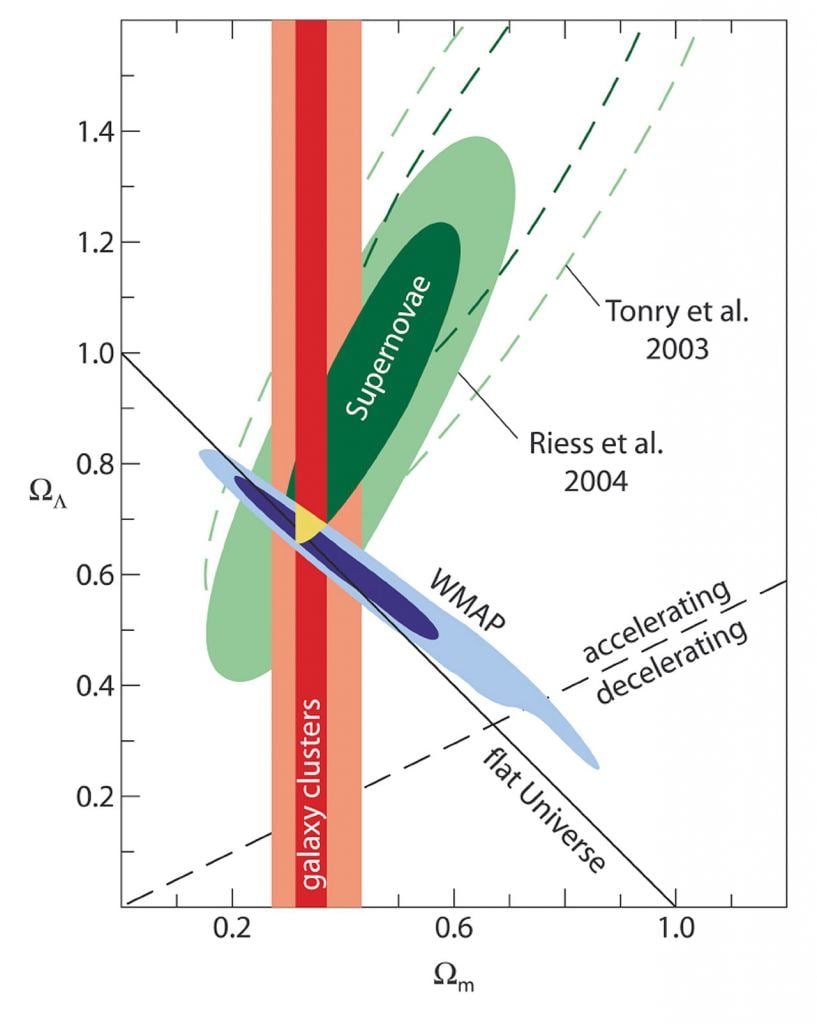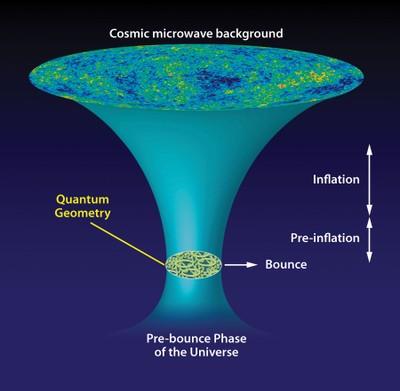Our universe is best described by the LCDM model. That is an expanding universe filled with dark energy (Lambda), and dense clumps of cold dark matter (CDM). It is also sprinkled with regular matter that makes up planets, stars, and us, but that only makes up about 4% of the cosmos. While we don't know what dark matter and dark energy are, we know how they behave, so the ?CDM model works exceptionally well. There's just one small problem.
The LCDM is defined by several parameters, such as the value of the Hubble Constant, which determines how quickly the universe is expanding, or the baryon density parameter, which describes the scale at which galaxies cluster together. Several independent experiments have measured these parameters, and they get results that slightly disagree. For example, observations of distant galaxies give a Hubble Constant that is higher than the value found from the Cosmic Microwave Background (CMB). These disagreements are known as a tension in the LCDM model. It is perhaps the biggest problem in modern cosmology.
One way to address this problem is to look to new experiments, such as those involving gravitational wave astronomy. But so far, these haven't made things better. Another path is to look toward new physics, specifically, theories that extend the standard model of particle physics.
Like the LCDM model of cosmology, the standard model of particle physics works extremely well. But there are some hints around the edges that there could be something more. There is no particle in the standard model that can account for dark matter, for example. So physicists have developed models to go beyond the standard model. The most popular of these is a class of models known as string theory. There is, however, a less popular model known as Loop Quantum Gravity (LQG).
In LQG models, space and time have a fundamental granularity to them at teeny tiny scales. We would never notice this in our everyday lives, or even in the kinds of high-energy experiments we do in modern particle accelerators. However, at the most intense regions of the universe, such as the interiors of black holes or the big bang's first moments, this granularity would matter significantly.
Recently, a team looked at how Loop Quantum Gravity could have interacted with energy and matter during the big bang period. They found that the structure of LQG in the early universe would be magnified by cosmic expansion to shift the observed cosmic parameters. In other words, the tension we see in the LCDM model could result from a cosmic dance between the very tiny and the very large.
That's all fine and good, but just because a theory can work doesn't mean it is the theory that does work. So the team also looked for a way their model could be distinguished from other solutions. They found that LQG would also leave its mark on the Cosmic Microwave Background. If their model is correct, the CMB should have clusters of small fluctuations that are not statistically random. The granular structure of space and time should leave a detectable imprint.
These fluctuations would be too small for satellites such as Planck to observe, but future missions such as the Cosmic Origins Explorer should detect them. If the team is right, we might not only solve the mystery of cosmic tension, we might also take our first step into a new realm of physics.
Reference: Ashtekar, Abhay, et al. " Alleviating the tension in the cosmic microwave background using Planck-scale physics." *Physical Review Letters* 125 (2020) 051302.
 Universe Today
Universe Today


